
Click here to submit a request to the GOT Space team!
Georgia Outreach Team for Space (GOT Space) is a STEM outreach program in Georgia, managed through the Georgia Space Grant Consortium (GSGC), and utilizing its network of affiliates across Georgia. Current GSGC affiliate participation includes Georgia Institute of Technology (GSGC lead institution), Georgia State University, and Kennesaw State University.
GOT Space brings free, interactive presentations about astronomy and engineering to your classroom or program! Our ambassadors are primarily undergraduate and graduate students getting degrees in Physics, Astronomy, and/or Engineering with a passion for science communication. When you submit a request through the interest form, a lead ambassador will email you to coordinate details about our visit.
GOT Space ambassadors have done visits for:
- Schools
- Camps
- Clubs
- Boy/Girl Scouts
- Youth Programs
… And yours could be next!
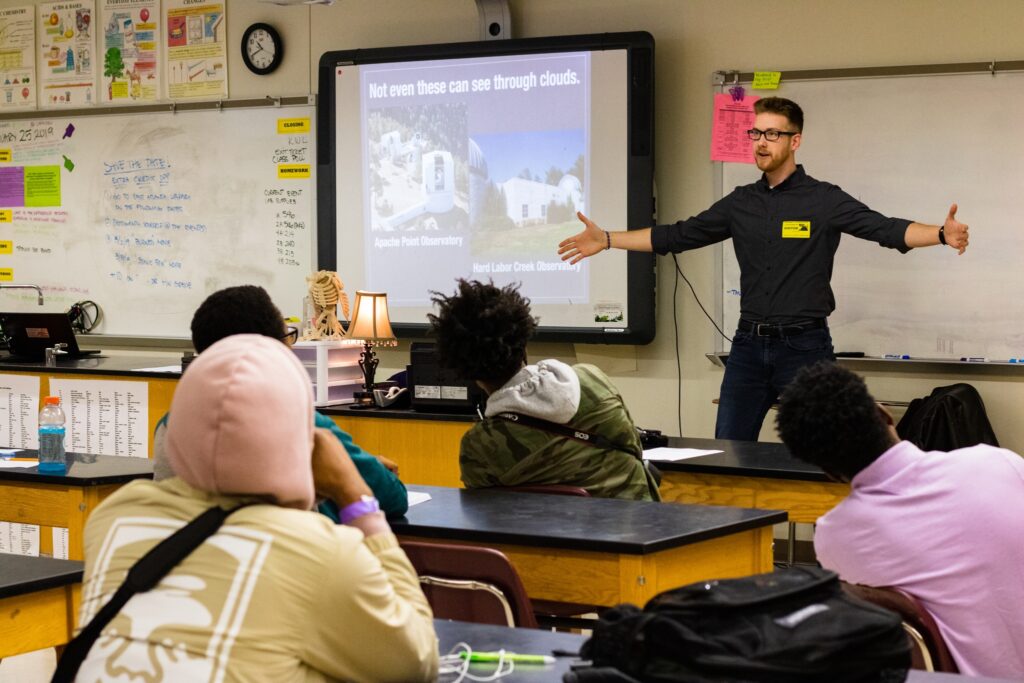
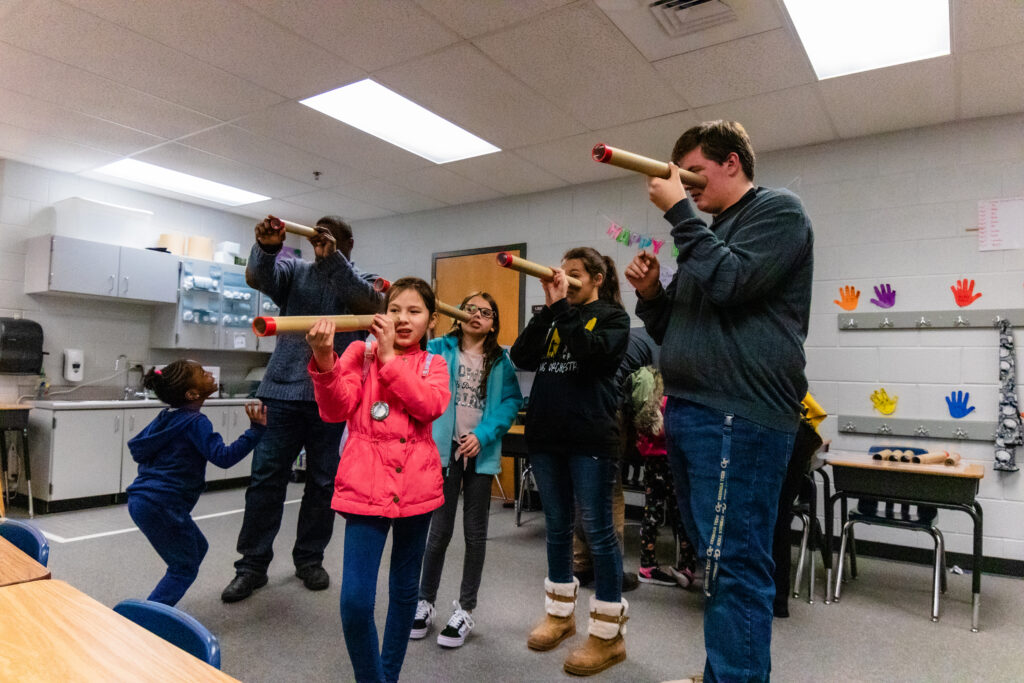
Our Impact
Since the initiative began in 2018, GOT Space has visited 40+ schools and programs, and brought the joys of science to 10,000+ students. We’ve formed lasting connections with multiple schools and teachers, leading to repeat visits over the years.
2023-24 school year by the numbers:
- 18 events
- Over 1,200 students
- 15 graduate ambassadors
- 15 undergraduate ambassadors
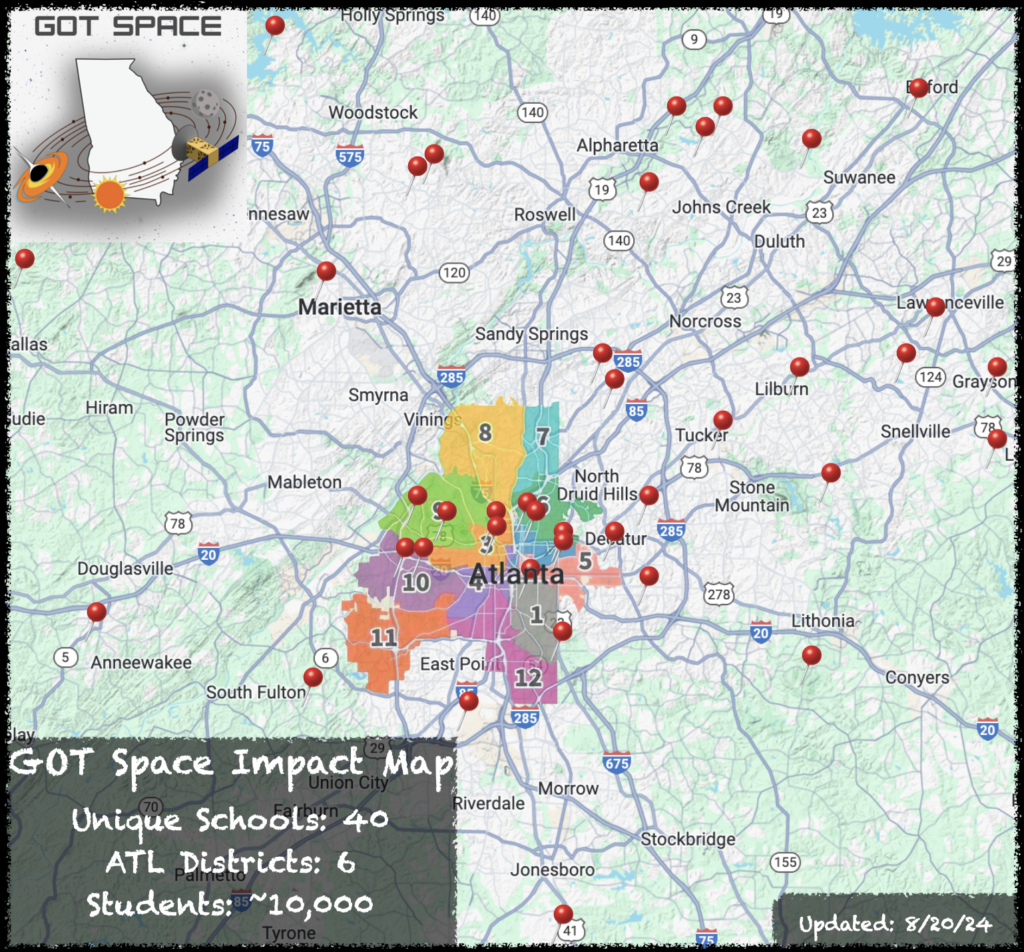
This map shows the locations that GOT Space has visited since its inception.
Our Activities and Presentations
We have a full suite of presentations, demonstrations, and hands-on activities for you to choose from below. We can modify any of them to better accommodate your classroom’s age range and specific topic of study. If none of the items below are what you’re looking for, feel free to reach out via the interest form and we can create new presentations as needed.
The majority of our presentations are in-person, but we are also well-equipped to present over Zoom in instances where our ambassadors are unable to travel to your location.
Hands-On Activities and Interactive Games
Powerpoint Presentations
Students learn about the phases of the Moon, and draw the phases on a simple two-cup setup that allows them to cycle through the phases.
What are the types of light emitted by the Sun? Is there light that we can’t see? This activity focuses on the use of UV-reacting beads, which change color when exposed to the Sun. Students learn about forms of light that we can’t see with our eyes, but which still have a big impact on our lives.
We’ve all seen the illustrations of the Solar System where the planets orbit around the Sun in even rings. However, this looks nothing like the actual distribution of planets in the Solar System! This activity shows students the scale of our Solar System and relative distances between planets, giving them a sense of just how empty outer space really is.
What types of life exist on Earth? What might aliens look like? This activity allows students to use their imagination and creativity to conceptualize alien life forms, and discusses various biological factors that are considered when thinking about realistic alien life.
You and your team are setting up a base on Mars! This is a card-based strategy game that allows students to choose what aspects of society they would prioritize (such as agriculture, security, and entertainment), and troubleshoot various obstacles that get in their way.
“Are You Smarter Than a 5th Grader” and “Who Wants To Be a Millionaire?”
These trivia games are student favorites for STEM Nights and class presentations. The questions are all astronomy-based, and students can either play as one collaborative group or in two competing groups.
Normally we can only use a telescope at night, but a solar telescope can be used in broad daylight. By applying a specific filter that only lets in a certain type of light, we can safely observe the Sun and its various features such as sunspots in a similar way that wearing eclipse glasses lets us safely look at the Sun. This activity lets students see our star in a totally new and engaging perspective.
Looking Through a Telescope at Night
This is a classic activity for STEM nights or other evening events: we bring and set up a telescope that can observe the Moon or any other fascinating features in the night sky.
The International Space Spation
This presentation gives an overview of the ISS and explains how it was built. It also discusses astronaut life on board, and what it takes to be a NASA astronaut.
Typically presented in conjunction with our UV Beads activity, this presentation explores the size of the Sun, the meaning of space weather, and the different kinds of light we receive from the Sun.
What Do We Know About the Solar System?
This presentation explores the types of objects found in the Solar System (such as asteroids and comets), as well as the “Goldilocks Zone” that makes Earth an ideal planet for life.
Building a Picture of a Supermassive Black Hole
A few years ago, we received the first-ever picture of a supermassive black hole, located in the galaxy M87. This presentation talks about the science and collaboration between astronomers around the world that went into producing this image. It also discusses what we can learn about black holes from this image.
Exoplanets are planets outside our Solar System orbiting other stars. There are several star systems with planets that might be hospitable for life. This presentation explores what these planets might look like, and what kinds of life could theoretically live on them.
A very useful way to study how galaxies work is by looking at them through wavelengths that our eyes can’t perceive. This presentation discusses the various forms of light that are invisible to us (such as radio emission), and what we can learn about galaxies through these perspectives.
As the age-old question goes: Is there life on Mars? This presentation talks about our attempts to answer this question, and our best guess at the kinds of life that are likeliest to exist on the planet.
Rocket Team Visits
Georgia Tech’s two rocket teams, Georgia Tech Experimental Rocketry and Yellow Jackets Space Program, work on building rockets that can fly tens of thousands of feet into the air. And best of all, they can bring a demonstration of their engineering to you! A visit from one of these rocket teams engages students with examples of real-world engineering, and a live demonstration from one of their rockets.
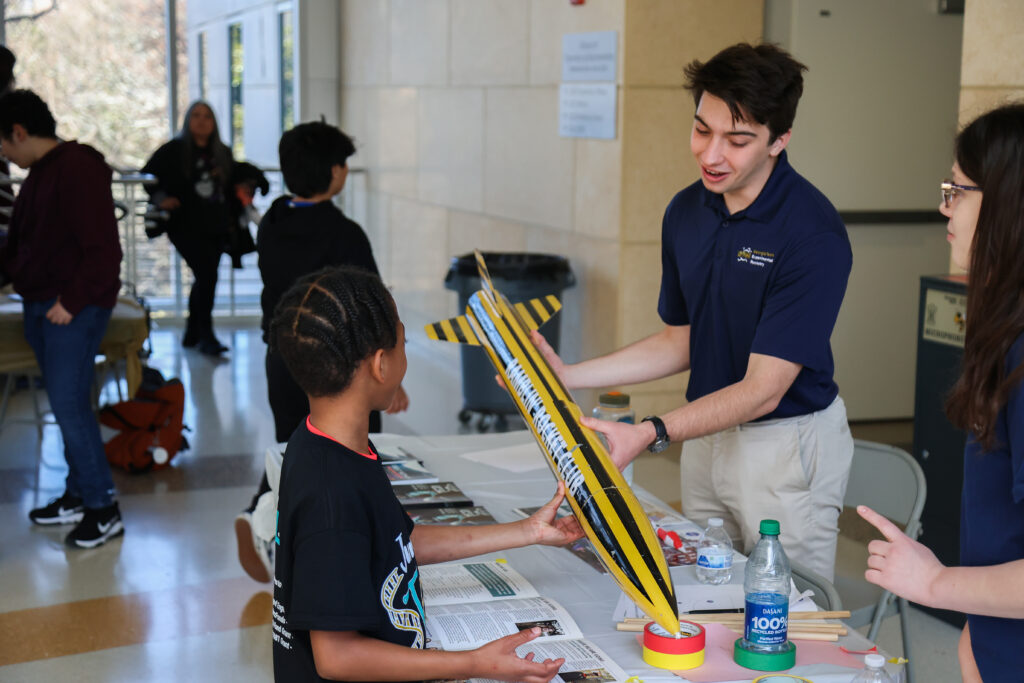
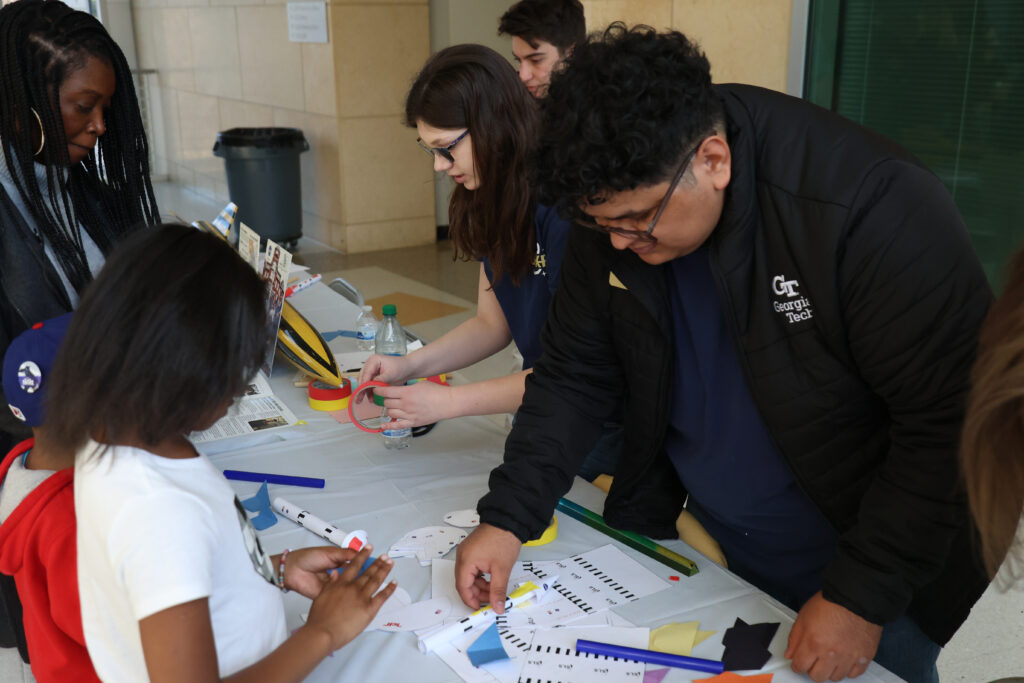
Our Leadership Team
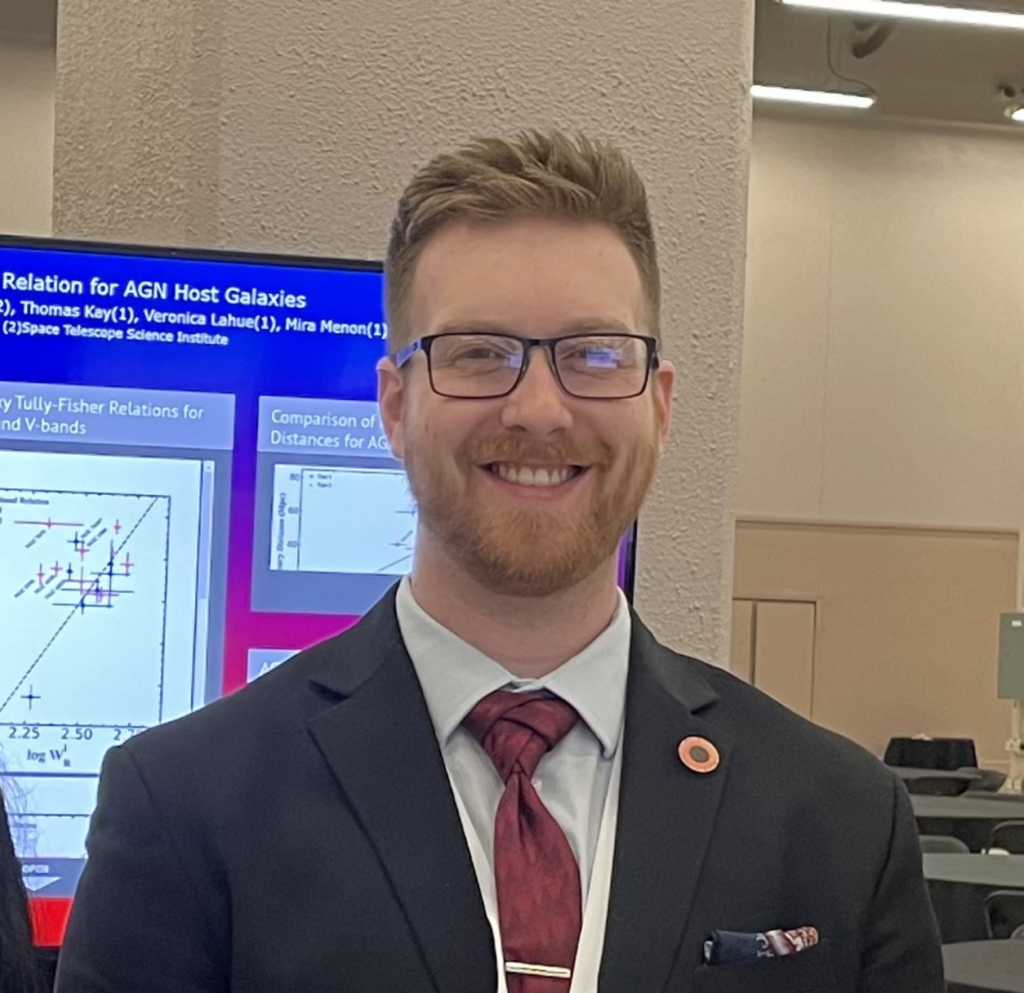
Dr. Justin Robinson is a lecturer of physics and astronomy at Georgia State University. His research interests include extragalactic distance measurements, supermassive black hole mass measurements, and relationships between active galaxies and supermassive black holes. He co-founded the GOT Space initiative as a GSU graduate student back in 2018, and has been involved ever since!
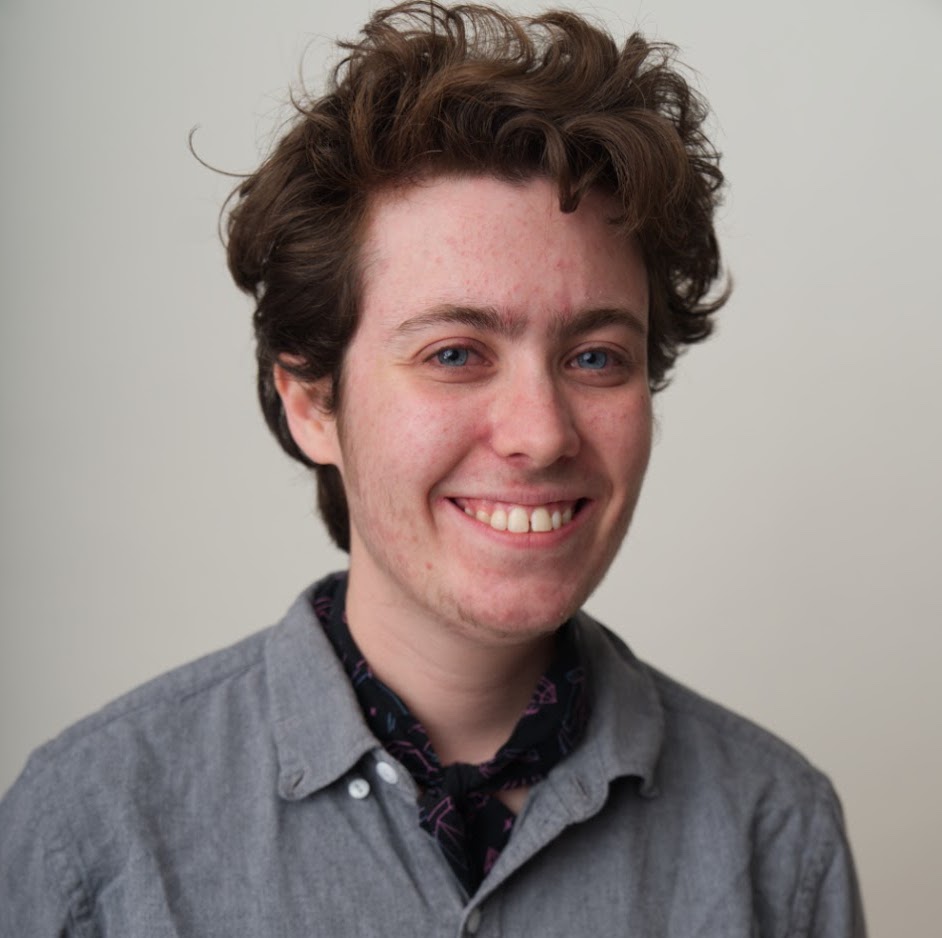
Julia Falcone is a fifth-year Ph.D. Candidate in the Astronomy program at GSU. Her research focuses on processes related to supermassive black holes in the centers of other galaxies. She has been a part of the GOT Space team since 2021 and loves doing classroom visits!

Fallon Konow is a 5th year graduate student in a dual program between Georgia State University and the University of Rome Sapienza. She works on solar instrumentation and spends her days building a new network of telescopes to study solar flares. Fallon is extremely passionate about outreach and DEI efforts, and as such has been one of the graduate leads at GOT Space for the past 3 years.

Lori Skillings is the Program Manager for the Georgia Space Grant Consortium. She has a passion for STEM education and oversees the logistics of GOT Space.
Disclaimer: the GOT Space leadership team will make every effort to accommodate outreach requests received, however please understand scheduling is dependent upon GOT Space Ambassador availability.
